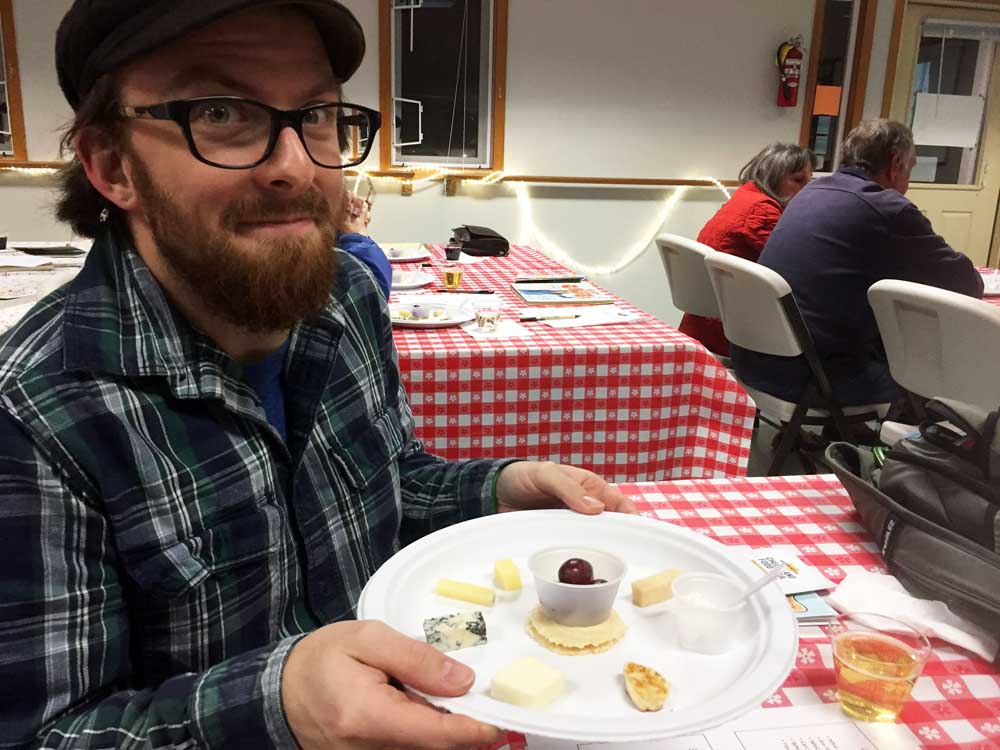Scratchpad: A fresh look at cheese
Published 7:30 am Wednesday, November 14, 2018

- Features Editor Erick Bengel with cheese. Behold the power.
Cheese and I have a complicated history.
I was 19, sitting at a booth in a campus food court across from an exchange student from France, running my mouth a bit too much, perhaps, but somehow convincing myself she found my pimply American charm irresistible.
The conversation turned to cheese. I don’t recall how we got there, but once we arrived, there was no turning back.
Cheese is important to me, she said. Me, too, I replied.
See how much we have in common?? Look at us, having this meeting of minds, bridging the cultural gap, turning cheese — cheese! — into a viable topic of conversation. What shall we name our children?
She asked what kind of cheese I liked. I hadn’t counted on this level of depth.
“Uh, string cheese,” I said. That’s specific enough, right?
The look on her face was unmistakable: I’d either just said something extremely witty, or the opposite.
I asked what kind of cheese she enjoys. When she uttered the word “Camembert” in her worldly accent, I started to panic. Had I answered wrong just now? But … I mean … who doesn’t like string cheese?
That was our last conversation, about cheese or anything else.
If only I’d taken Marc Bates’ cheese tasting and appreciation class, which he recently held at Cannon Beach’s Tolovana Hall in partnership with Tolovana Arts Colony. I could have followed up with:
“Ah, but string cheese is nothing to snicker at. A pasta filata cheese, in the same family as cheddar, it’s an example of a hard cheese cooked at low temperatures and then stretched. So there.”
Basic cheese knowledge, like cheese itself, is something you think you can live without — but when you need it, it’s the most important thing to have handy. And, also like cheese, no matter how much you have, you can always have more.
Bates, a cheesemaker and World Cheese Championship judge, is known as “The Cheese Guy.”
At most cheese competitions, Bates and other judges begin at 100 points, the maximum amount, then dock points based on aroma, flavor, texture and body, appearance and rind development. “Most of what we do is, we take points off,” he said.
As my tablemate noted, it’s as if cheese judges begin with a perfect cheese in mind that humans can only screw up in the real world. We mortals can merely produce inferior copies of some Platonic form of Cheese.
But cheese takes so many forms that to speak of “cheese” generically is almost to betray one’s ignorance.
Before us were plates of medium cheddars, then plates of fresh cheeses (Chevre and Halloumi), heat- and acid-precipitated cheeses (Paneer), soft ripened cheese (Beach Bleu), semi-hard cheese (Boerencase) and hard cheeses (Provolone, Reading and Cougar Gold).
I’d hoped that in the years since my encounter with that exchange student my taste had matured like the hard nugget of 10-year-old Cougar Gold — refined, cultured, a little funky.
But as Bates analyzed the cheese samples — noting acidity up front, bitter aftertastes and undertones I failed to pick up on — I realized I still have a dull and impatient palate. Deep down, the starving student in me still values quantity over quality. Not content with appreciating the cheese in front of me, I always want to appreciate more cheese. All the cheese.








